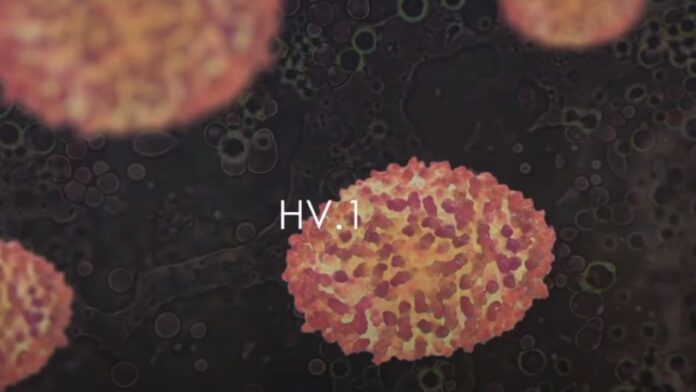A new omicron subvariant dubbed HV.1 has rapidly emerged as the dominant COVID-19 strain in the United States, now causing an estimated 30% of cases. Its sudden predominance spotlights how the SARS-CoV-2 virus continues mutating into concerning new variants.
However, HV.1 so far shows similar contagiousness and symptoms as recent COVID-19 variants based on early analysis. Still, experts closely monitor all new offshoots as the virus remains unpredictable amid low booster uptake nationwide.
HV.1 Descended from Omicron Family Tree to Lead New Variants
Belonging to the same omicron family tree responsible for last winter’s massive infection wave, HV.1 descends directly from subvariant XBB.1.9.2, itself a descendant of Eris or BG.5. Originally detected last summer, HV.1 circulation expanded rapidly starting in September. By late October, it dethroned Eris as America’s most widespread variant.
This demonstrates SARS-CoV-2‘s continued evolution through mutations occasionally yielding fitter viral generations. However, most new variants still resemble older strains. HV.1’s ancestral ties provide partial immunity from recent illnesses or vaccination. But its mutations may enable greater transmissibility based on HV.1’s quick ascendance after emerging.
Testing Capacity Declines Leave Spread Difficult to Track
Unfortunately, reduced COVID-19 testing during 2022 impedes accurately tracking newly dominant variants like HV.1. Most infected Americans forgo tests now, skewing data reliability on viral prevalence even as the CDC expands genomic sequencing capability. Still, existing metrics point to HV.1 possibly spreading more easily than older omicron descendants.
Fortunately, all standard PCR and rapid antigen tests reliably detect known COVID variants today, so HV.1 infections produce positive results allowing isolation precautions once feeling symptoms. Americans nationwide retain COVID test access through government orders, pharmacies, and healthcare providers, although utilization dropped significantly after government-funded programs lapsed.
HV.1 Outcompeting Rivals But Severity Still Resembles Omicron
Over recent months, HV.1 outcompeted faster-spreading or immune-evading variants like BQ.1.1 to overcome its cousins. Some data hints at improved immune evasion, although not nearly enough to compromise vaccine protections against severe disease. And thus far, early real-world evidence shows HV.1 causing similarly milder illnesses as post-omicron descendants.
As colder weather drives people indoors, however, scientists anticipate a seasonal infection resurgence in coming months with HV.1 the spearhead. Any uptick in cases could produce rises in hospitalizations and deaths based on raw totals, although most HV.1 illnesses should avoid intensive severity due to accumulated immunity. But pandemic uncertainty persists given waning societal precautions.
Congestion and Sore Throat Mark Most Common HV.1 Symptoms
According to infectious disease experts, HV.1 produces comparable COVID-19 symptoms as related strains. Most commonly, infected individuals experience congestion, runny noses, sore throats, and stubborn coughs concentrated in the upper respiratory system marking contagious phases. Fevers, headaches, muscle aches, and general fatigue also frequently occur.
Data increasingly connects recent omicron subvariants with relatively milder illnesses concentrated on cold-like symptoms. This results from acquired immune defenses through vaccination or prior exposures preventing serious lung impacts. Most infected Americans weather HV.1 outpatiently with sufficient hydration and rest. But medically vulnerable groups always warrant testing upon initial symptoms to access antiviral therapeutics if catching COVID early.
Vaccines Retain Importance Despite Slow HV.1 Booster Adoption
Federal health authorities urgently emphasize COVID-19 vaccination and boosters in combating HV.1 despite extremely low booster usage nearly a month since updated shot rollout. CDC genomic analyses suggest triggering substantial immune memory against HV.1 from the new bivalent booster formulations. Real-world evidence from Pfizer and Moderna also indicates strengthened protection for older booster generations.
Lingering misperceptions around vaccination necessity during a perceived lull likely explain the consecutive disappointing booster uptake among eligible Americans. But health messages must persuade more people into maintaining current immunization against high-risk COVID complications, underscoring the ongoing benefits given continual viral mutations. With holiday gatherings approaching, proactively renewing vaccination protection remains vital despite public exhaustion.
Ultimately, while concerning as the latest viral offshoot challenging hard-fought social normalcy, the ascendant HV.1 strain – thus far – appears a manageable threat compared to past devastating COVID variants, avoiding the most alarming mutations. But it signals the enduring need for surveillance testing and genomic sequencing paired with further booster vaccinations to sustain community safeguards if the pandemic persists evolving unpredictably. Until achieving endemic equilibrium, the coronavirus warrants persistent vigilance against dangerous new variants amid waning societal precautions.














![Technical Aspects of 844 Area Code in 2024 [Detail Guide] 844 Area Code](https://articleify.com/wp-content/uploads/2024/01/844-Area-Code-150x150.jpg)














